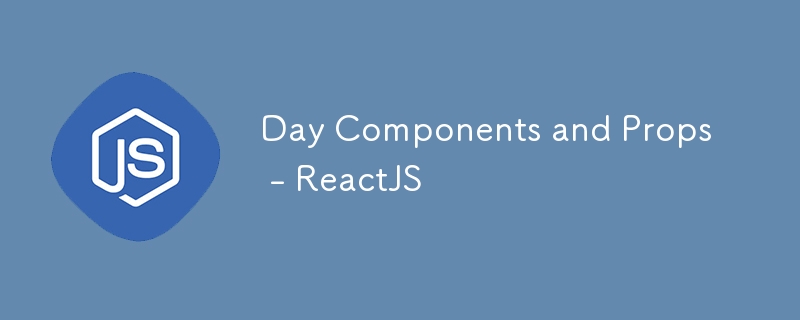

Welcome to Day 4 of the "30 Days of ReactJS" challenge! Today, we’re going to explore Components and Props—the building blocks of any React application. Understanding these concepts will allow you to break down your UI into reusable, independent pieces.
What Are Components?
Components in React are like the ingredients in a recipe. Just as you combine different ingredients to create a dish, you combine components to build a React application. A component is a JavaScript function or class that optionally accepts inputs (known as props) and returns a React element that describes what should appear on the screen.
There are two main types of components in React:
Functional Components: These are JavaScript functions that return JSX. They’re simpler and easier to read.
Class Components: These are ES6 classes that extend from React.Component. They have more features like state and lifecycle methods but are less common in modern React development.
Example: A Button Component
Let’s create a simple button component:
function Button() {
return (
<button>Click me!</button>
);
}
This Button component is a functional component that returns a button element with the text "Click me!".
Why Components Matter
Components allow you to break down your UI into smaller, manageable pieces. This makes your code more organized and easier to maintain. Imagine trying to cook a complex dish without breaking it down into steps. It would be chaotic! Similarly, building a UI without components can become overwhelming.
Real-Life Example: Lego Blocks
Think of components like Lego blocks. Each block (component) is a piece of your application, and you can combine them to create something larger. Just like Lego blocks, components can be reused in different parts of your application.
What Are Props?
Props (short for "properties") are the way you pass data from one component to another. They are similar to function arguments and can be used to customize a component.
For example, let’s say we want to create a Button component that can display different text based on the props it receives:
function Button(props) {
return (
<button>{props.label}</button>
);
}
Now, when you use the Button component, you can pass in a label prop to customize its text:
function App() {
return (
<div>
<Button label="Submit" />
<Button label="Cancel" />
</div>
);
}
Here, the Button component is used twice, but with different labels: "Submit" and "Cancel".
The Importance of Props
Props make your components more flexible and reusable. Instead of hardcoding values inside your components, you can pass in dynamic data through props, allowing you to use the same component in different contexts.
Setting Up Components and Props with Vite
Since we’re using Vite for our development environment, setting up components and props is straightforward. If you’ve been following along, your Vite project is already configured. You can start creating components in separate files and import them into your main application.
Here’s how you can structure your project:
1. Create a New Component: Create a new file, Button.jsx, in your src folder and define your Button component there.
2. Use the Component in Your App: In your App.jsx file, import the Button component and use it with different props.
Putting It All Together
Components and props are at the heart of React’s component-based architecture. By breaking down your UI into smaller components and passing data between them using props, you can build scalable and maintainable applications.
Tomorrow, we’ll dive into State and Lifecycle Methods, which will allow your components to manage dynamic data and respond to changes over time.
Das obige ist der detaillierte Inhalt vonTageskomponenten und Requisiten – ReactJS. Für weitere Informationen folgen Sie bitte anderen verwandten Artikeln auf der PHP chinesischen Website!




